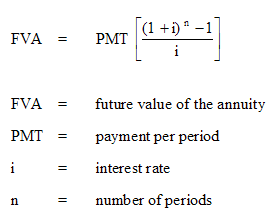
Oh, dear latte! You have been crucified. But don’t worry. Always keep me happy with your frothy texture and warm liquid company.
Folks, you have all heard this before. “If you don’t indulge in that Starbucks coffee every day and invest the savings, you will get rich” or something like that. I have heard this story far too many times from far too many ‘experts’. It has even found a place in some bestseller books that sold a million copies! Time to put this overused latte story to test. Let’s compare the latte math with the real math @ TFR.
First, I think we all need coffee, despite my fellow blogger Mr. Tako’s gripe. So for this analysis, I assumed you are still consuming a humble cup of coffee every day at a vending machine or cafeteria. It’s only the latte we are battling.
Latte-nomics
Your daily savings by giving up a Starbucks Latte ($4) and settling for a ‘no frills’ coffee ($1): $3
Imagine you are 30 years old and you do this every working day for the next 35 years. Let’s ignore price inflation for now or at least assume the $3 daily savings holds up even if both coffee’s went up in their price. We will take 241 working days/year (52 wks*5 days/wk. – 9 holidays – 10 vacation or sick days). You’ll save $723 per year ($3*241). Investing this money in a broad portfolio of no-brainer index funds can grow at a cumulative annual growth rate of 8%. Over a 35 year period with annual compounding, your daily Latte sacrifice would yield around $125,000 when you turn 65. Sounds good, right? This is what the latte-bashing crowd talks about. But the story doesn’t end here.
As impressive as this figure sounds, don’t discount the sacrifice. Imagine going without an exceptionally brewed cup of coffee each morning for the rest of your working life (which can be your only comfort on a bad work day), that is, for 35 years or 8,435 working days!
Compare this with the case of a sensible frugalist (all you TFR readers!) who refuses to give up this daily indulgence but focuses on the big picture.
The  Approach
Approach
A TFR reader would not deny such simple indulgences but rather be strong-willed about resisting the Madison Avenue-driven symbols of lifestyle, typically seen in a major purchase we all are confronted with every few years: buying a car. Instead of buying a $35,000 premium/luxury car just because you can (and to be told later by ‘experts’ to give up your daily latte to make ends meet!) , you will buy a reliable used car, say, a Honda or Toyota, for about $10,000. Both the ‘showy’ new car and the reliable used car will do a fine job of taking us to work every morning. I would even argue the used car will make you a more relaxed driver knowing that the inevitable dents, accidents and repairs along your commute will cost a whole lot less to fix compared to a luxury car. Ok, you may have to put up with your co-workers bugging you on buying an old clunker. They will never have your net worth. Anyway, buy a well-maintained used car and not a clunker ($10,000 still buys a decent used car). Your commute would be stress-free (if you drive a $35K car, you will worry about the likely uninsured driver in a rust-bucket trying to cut into your lane or the small scratch from your friendly neighbor kid’s skateboard) . Here’s the math comparing a reliable used car buyer who loves her morning latte vs. a stressed-out luxury car buyer who has grudgingly given up the latte.
For the sake of comparison, I assume both put down $10,000 for their cars. By buying a reliable used car, you will save about $38,203.20 over 5 years. In other words, an annualized savings of $7,640.64 as shown in the table.
Luxury Car Reliable Used Car Savings over 5 years Purchase Cost ($10K down) 35000 10000 $0 (same down payment) Monthly Payment 449.22 0 26953.2 Yearly Insurance 3000 1000 10000 Est. Repairs & Maint. (Yr). 600 600 0 Vehicle Taxes (~1%) 350 100 1250 Savings/Year 7640.6400 Total Saved: 38203.2
Touch or Mouse over first column in select rows for the calculation basis
Let’s assume you invest these savings in the same no-brainer portfolio (8% annualized return) as our ‘latte-less’ friend has been told to do. When both of you turn 65 years (and assuming both the used car and new car are both replaced every 5 years), you would have accumulated $1.32 million more, while enjoying great coffee each morning! This is more than 10 times the amount accumulated by our friend who has to drive past Starbucks each morning and be reminded of his Latte sacrifice…for 35 years! To arrive at this figure yourself, use the formula below and plug the annual savings figure above (for PMT), use 8% (i), 35 years (n) and voila, FVA is the answer you want.

This formula is powerful, just like 10! rocks.
Adding insult to injury for our poor latte-less friend, even if you followed the table above for just the first 5 years till you are 35 and then proceeded to buy brand new luxury cars like our latte-less friend every 5 years till you retired at 65, you still come out way ahead. By investing the car savings during the first 5 years and nothing more ever after, you still would have accumulated over $384,000 more than the ‘latte-less’ friend by the time you turn 65! This figure is still more than three times what our friend would have accumulated by giving up a refreshing daily latte. The formula for this is a simple compound interest, by taking the 5-year savings ($38,203.20) compounded for 30 years at 8%.
This example illustrates both the power of compounding and the rewards of making sensible decisions where they matter most.
Is giving up the daily latte really worth it compared to making sensible purchase decisions in the larger impact areas of your life? What do you think?
Full disclosure: I love an outstandingly brewed cup of coffee, served in the world’s best coffee bars by talented baristas. No gourmet coffee company has paid me to write this post.
Raman Venkatesh is the founder of Ten Factorial Rocks. Raman is a ‘Gen X’ corporate executive in his mid 40’s. In addition to having a Ph.D. in engineering, he has worked in almost all continents of the world. Ten Factorial Rocks (TFR) was created to chronicle his journey towards retirement while sharing his views on the absurdities and pitfalls along the way. The name was taken from the mathematical function 10! (ten factorial) which is equal to 10 x 9 x 8 x 7 x 6 x 5 x 4 x 3 x 2 x 1 = 3,628,800.

6 comments on “Sensibly Frugal”